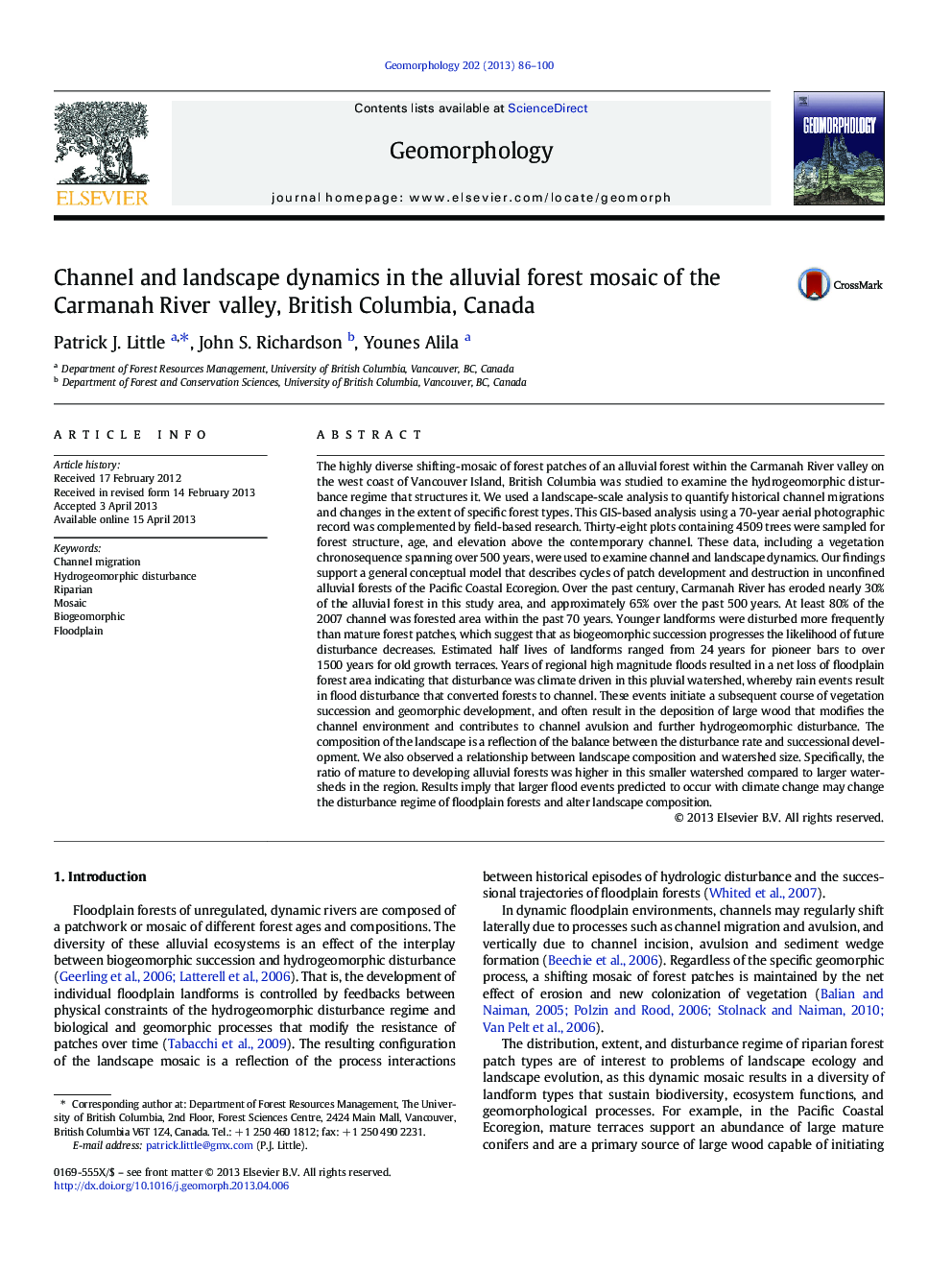| کد مقاله | کد نشریه | سال انتشار | مقاله انگلیسی | نسخه تمام متن |
|---|---|---|---|---|
| 4684631 | 1635447 | 2013 | 15 صفحه PDF | دانلود رایگان |
The highly diverse shifting-mosaic of forest patches of an alluvial forest within the Carmanah River valley on the west coast of Vancouver Island, British Columbia was studied to examine the hydrogeomorphic disturbance regime that structures it. We used a landscape-scale analysis to quantify historical channel migrations and changes in the extent of specific forest types. This GIS-based analysis using a 70-year aerial photographic record was complemented by field-based research. Thirty-eight plots containing 4509 trees were sampled for forest structure, age, and elevation above the contemporary channel. These data, including a vegetation chronosequence spanning over 500 years, were used to examine channel and landscape dynamics. Our findings support a general conceptual model that describes cycles of patch development and destruction in unconfined alluvial forests of the Pacific Coastal Ecoregion. Over the past century, Carmanah River has eroded nearly 30% of the alluvial forest in this study area, and approximately 65% over the past 500 years. At least 80% of the 2007 channel was forested area within the past 70 years. Younger landforms were disturbed more frequently than mature forest patches, which suggest that as biogeomorphic succession progresses the likelihood of future disturbance decreases. Estimated half lives of landforms ranged from 24 years for pioneer bars to over 1500 years for old growth terraces. Years of regional high magnitude floods resulted in a net loss of floodplain forest area indicating that disturbance was climate driven in this pluvial watershed, whereby rain events result in flood disturbance that converted forests to channel. These events initiate a subsequent course of vegetation succession and geomorphic development, and often result in the deposition of large wood that modifies the channel environment and contributes to channel avulsion and further hydrogeomorphic disturbance. The composition of the landscape is a reflection of the balance between the disturbance rate and successional development. We also observed a relationship between landscape composition and watershed size. Specifically, the ratio of mature to developing alluvial forests was higher in this smaller watershed compared to larger watersheds in the region. Results imply that larger flood events predicted to occur with climate change may change the disturbance regime of floodplain forests and alter landscape composition.
Figure optionsDownload as PowerPoint slide
Journal: Geomorphology - Volume 202, 15 November 2013, Pages 86–100
